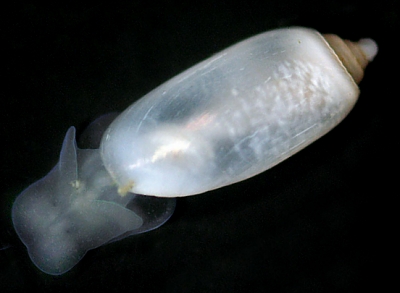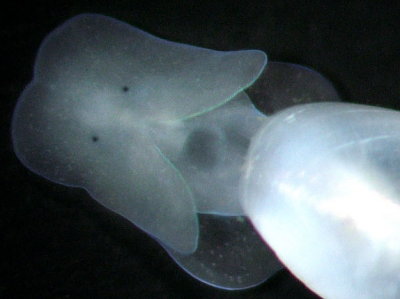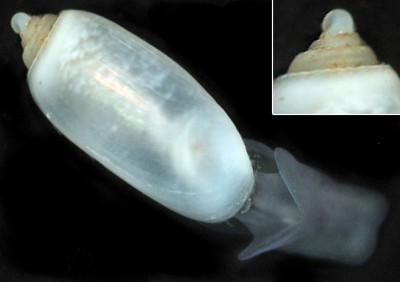Tornatina from Sunshine Coast, Queensland
July 4, 2008
From: Gary Cobb


Hi Bill and everyone!
I thought I might try real hard to get this information to you, knowing how hectic life is right now. Using a method we call Anaerobic extraction, Tornatina has emerged.
The interesting thing is it's shell. The protoconch is sideways. Surely there must be a good reason for this event?
I do believe this species is one of the most primitive.
We have found 8 of these little slugs here at Alexandra Headland intertidal area.
Locality: Alexandra Headland, Mooloolaba, Queensland, Australia, Pacific Ocean, 31 December 2007, Intertidal. Length: 2-4 mm. Photographer: Gary Cobb.
Cheers
Gary Cobb
gary@nudibranch.com.au
Cobb, G.C., 2008 (Jul 4) Tornatina from Sunshine Coast, Queensland. [Message in] Sea Slug Forum. Australian Museum, Sydney. Available from http://www.seaslugforum.net/find/21666
Dear Gary,
Thanks for this interesting find. It could well be a species of Tornatina, and if so, it is probably Tornatina apicina Gould, 1859 which was described from Sydney Harbour. The shape of the animal is certainly what I would expect for a Tornatina.
My reason for some hesitation is that there are many little shelled opisthobranchs with similar shaped shells, which are difficult to identify from their shells alone, even in the most well-known faunas. And I am afraid in Australia and much of the Pacific there are many names, but little real understanding of the fauna. Basically there is a lot of work to do.
Regarding your question about the strange protoconch. For those of you unfamiliar with the term, the protoconch is the larval shell which is retained at the tip of the spire of the adult shell. In opisthobranchs the larval shell spirals in the opposite direction to the adult shell. For example, if you hold most snail shells up with the spire at the top, the 'mouth' or aperture will be on the right side. There are a few exceptions, but not many. If you did the same with the larval shell, its aperture would be on the left side. This means that the join between the larval and adult shells is, to say the least, an awkward fit. If you look at the shells of most other marine snails, the larval shell (protoconch) spirals the same way as the adult shell and so the tip of the spire shows a smooth, seamless transition from the protoconch to the adult shell.
This change of coiling is known as heterostrophy, and is found in the opisthobranchs, pulmonates (land slugs and snails) and a number of small marine gastropods including the Valvatoidea, Architectonicoidea, Rissoelloidea and Pyramidelloidea. Collectively these gastropods which exhibit heterostrophy are known as the Heterobranchia. They have other anatomical features in common and are considered to be a separate 'branch' in the evolution of the gastropod snails.
Best wishes,
Bill Rudman
